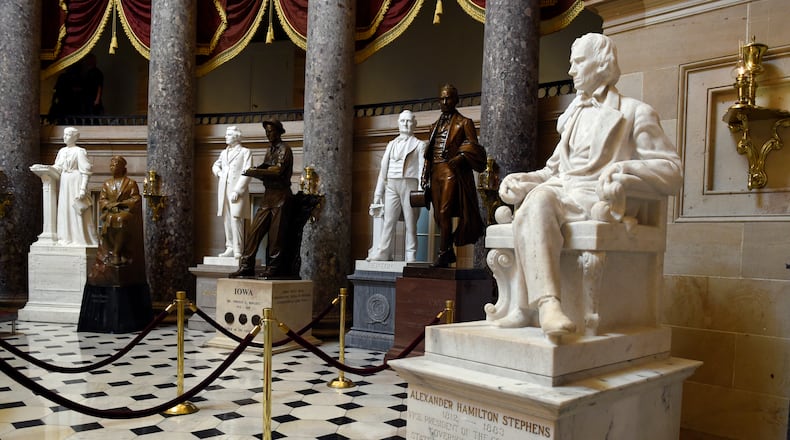Before he became vice president of the Confederate States of America, Alexander Stephens fought publicly against secession.
His reputation as an outspoken former Unionist, The New Georgia Encyclopedia says, helped him get the job as the No. 2 man in the Confederacy. It was seen as a way to solidify support from moderate elements.
Stephens’ most notable moment in the Confederacy came in its earliest days, when in March 1861 he delivered his “Cornerstone” speech describing slavery and white supremacy as the foundations on which the Confederacy was formed. The next month, Rebel soldiers fired on Fort Sumter, launching the Civil War.
The vice president’s wartime activities were limited, but in 1863, Stephens tried to initiate a prisoner exchange. The New Georgia Encyclopedia says the effort failed, but Stephens used it as an opportunity to press for negotiations to end the war. That, too, proved unsuccessful.
Stephens led a busy life both before and after the war. He was in his 20s when he entered the state Legislature in 1836. In 1843, he went to Washington as a member of the U.S. House of Representatives. There, he was an “ardent defender of slavery,” The New Georgia Encyclopedia says, but also helped produce the Compromise of 1850 to quell a crisis between slave states and free states.
Immediately after the war, he spent five months as a prisoner at Boston’s Fort Warren. After his release, Georgia elected him to the U.S. Senate, but he was never seated. Different reasons are given for why his admission was blocked. Some source materials say congressional Republicans at the time moved to prevent such a high-level Confederate official from joining their ranks. Others say it was because Georgia had not rejoined the Union at that point.
In 1873, Stephens won election to return to the U.S. House. He served there until 1882, when he was elected governor. He died the next year while still holding the office.
Stephens is buried on the grounds of Liberty Hall, his home in Crawfordville that now serves as a state park.
About the Author
Keep Reading
The Latest
Featured


